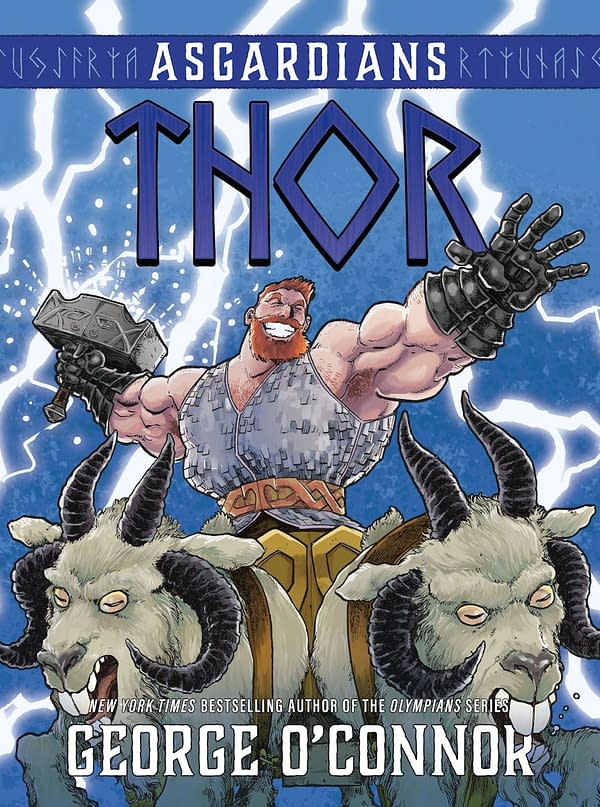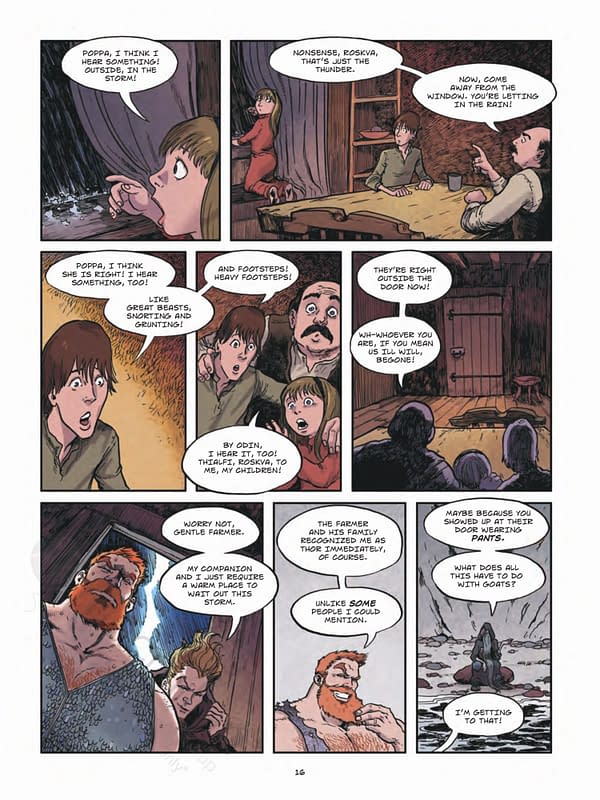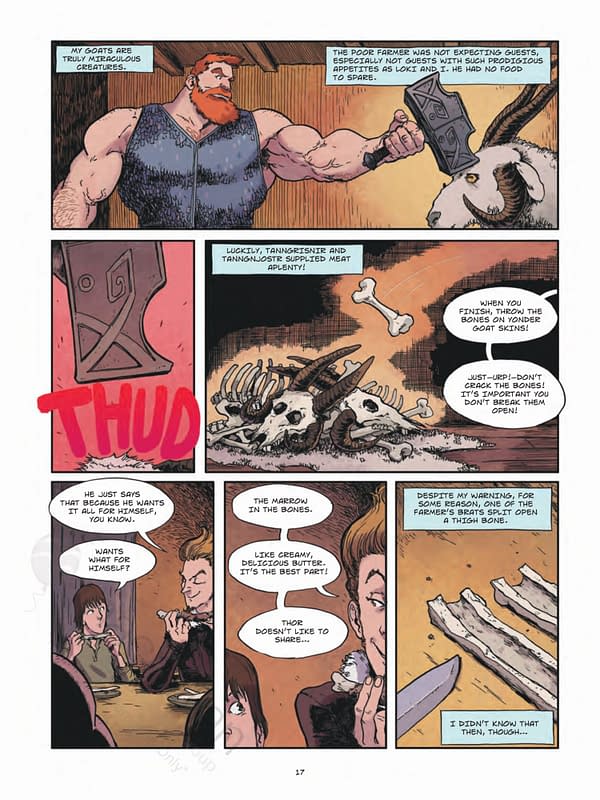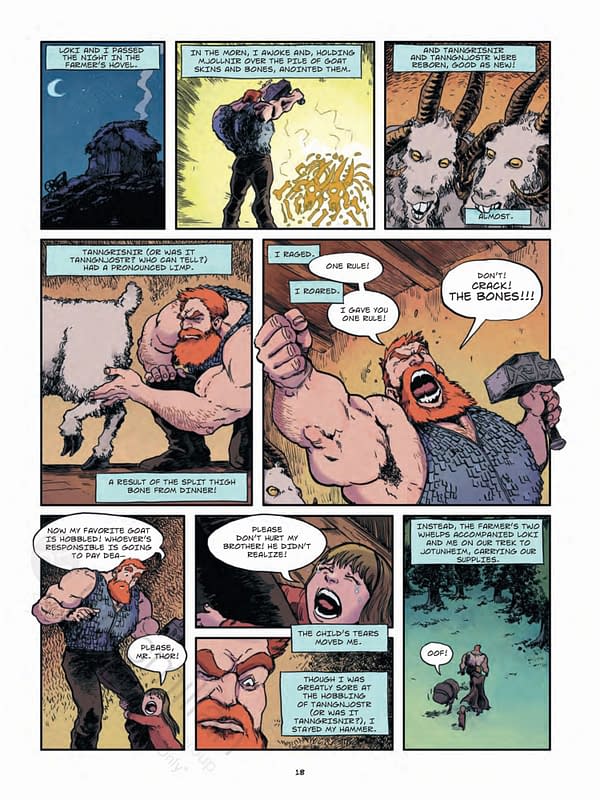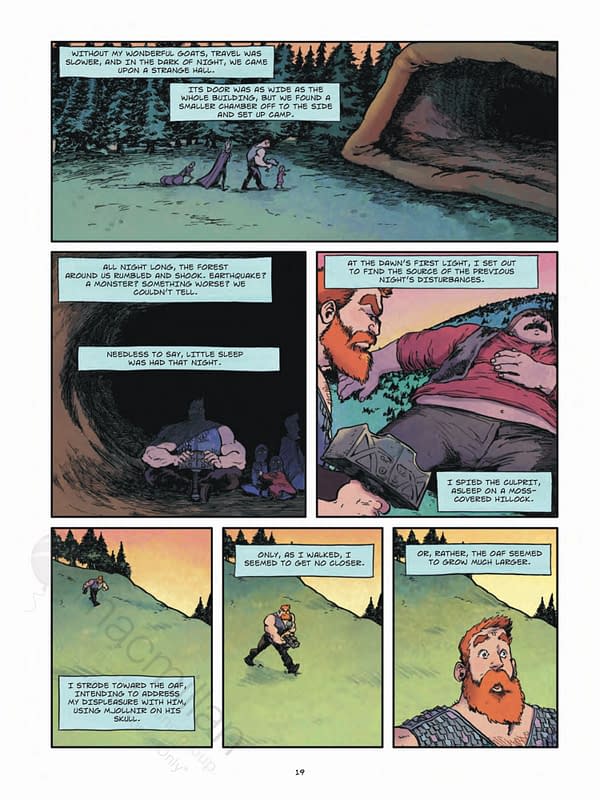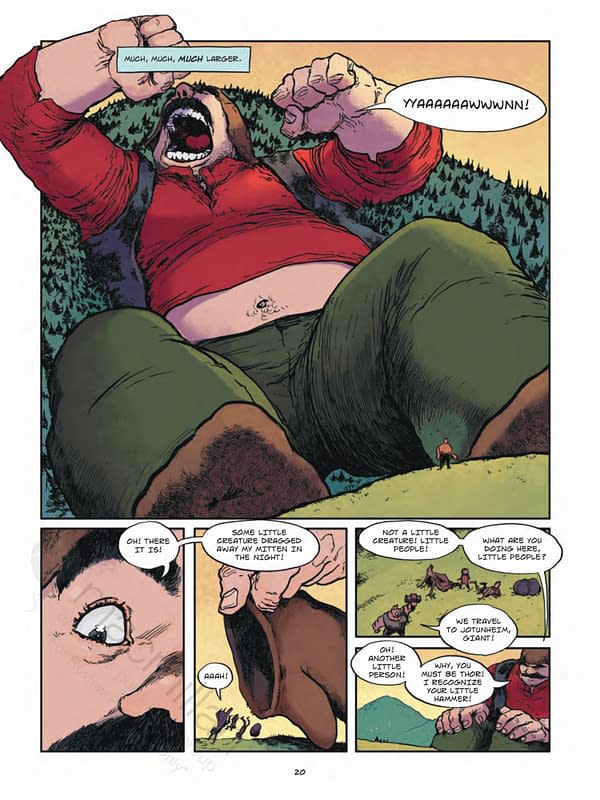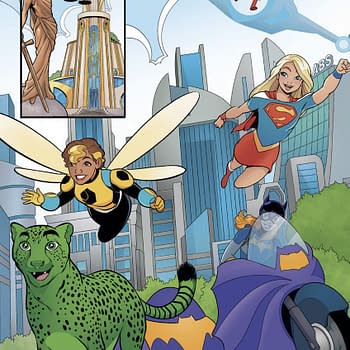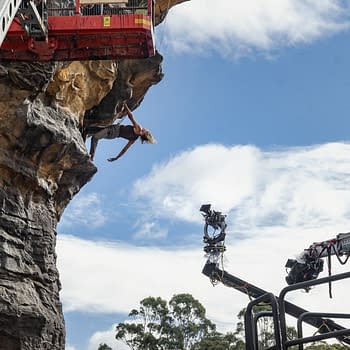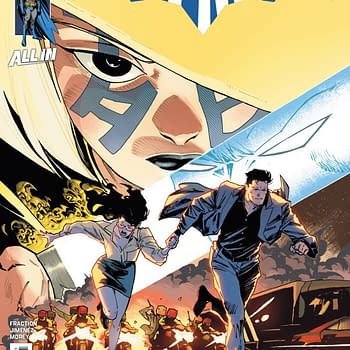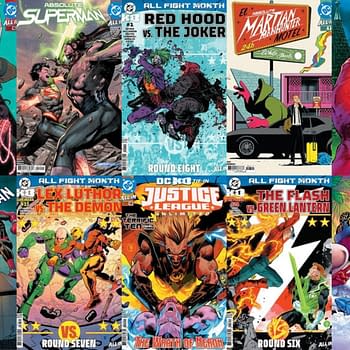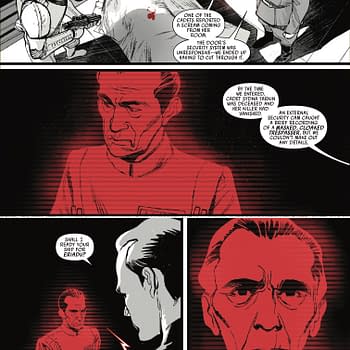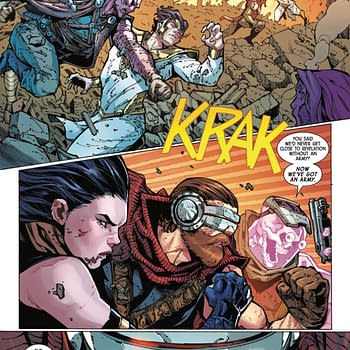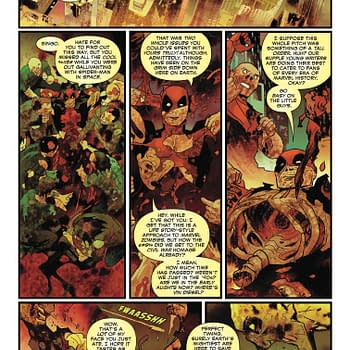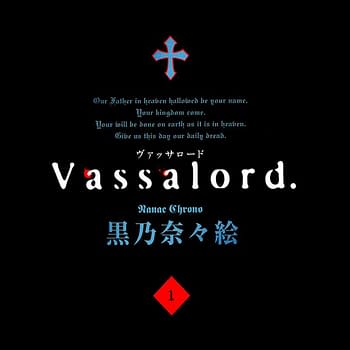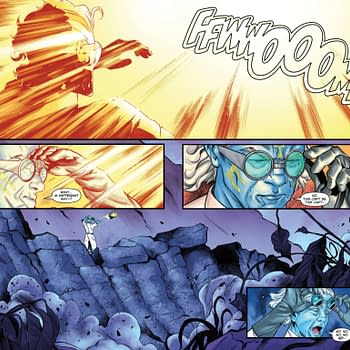Posted in: Comics, Comics Publishers, Current News, Marvel Comics | Tagged: George O'Connor, thor
George O'Connor On Asgardians: Thor… And Why He Is Loki's Nephew
George O'Connor is the comic book creator behind the Asgardians graphic novels, starting with Odin and now following up with Thor.
Article Summary
- George O'Connor discusses his new graphic novel series Asgardians, focusing on Thor and Norse mythology.
- O'Connor reveals his inspirations and artistic process, influenced by Walt Simonson's Mighty Thor comics.
- O'Connor emphasizes the mythological accuracy of Asgardians, contrasting it with Marvel's Thor adaptations.
- In Norse myths, Loki is actually Thor's uncle, reshaping common perceptions from modern media.
George O'Connor is the comic book creator, cartoonist and graphic novelist behind works such as Kapow!, Journey into Mohawk Country, Ball Peen Hammer, and more. Between 2010 to 2022, O'Connor wrote and illustrated Olympians, a 12-volume graphic novel retelling of the Greek myths, with one volume for each of the twelve Olympians. He is currently working on a four-book series on the Norse gods entitled Asgardians, starting with Odin and now following up with Thor. And he's asked to speak to you all about his approach to the god of thunder… and why Loki is Thor's uncle. Take it away George!
- Asguardians: Thor cover
- George O'Connor from PR
My name is George O'Connor, the cartoonist behind the graphic novel series Olympians and now, Asgardians. To commemorate the upcoming publication of Asgardians Book 2: Thor, Bleeding Cool has kindly invited me to share some recollections and behind-the-scenes anecdotes on the creation of my two series.
After finishing the 12 volumes (so far!) of Olympians, I knew that I wanted to tackle Norse mythology next. While Greek mythology was my first literary love, it was Norse mythology that really got me into comics, especially superhero comics.
Both my parents were comics fans, and so there was always plenty of comics in the house growing up– Superman, Hulk, Archie, Marvel's old Indiana Jones and Star Wars comics. I read all those, but I was more of a House of Mystery/ Conan sort of reader left to my own choices.
When I was in sixth grade or thereabouts, I had exhausted my local library's collection of age-appropriate Greek mythology retellings and had moved on to other mythologies, especially Norse mythology. One day my mom brought me an issue of Marvel's Mighty Thor. This was during Walt Simonson's classic run, issue 341, I think, where Thor fought Fafnir the Dragon. It hit me at the perfect time. I was a little mythology nerd and Simonson was introducing a whole bunch of accurate mythological concepts to the title. His art was so striking and powerful I literally couldn't tell if I liked it or hated it at first.
Eventually I decided I loved it and I was hooked, It created a link between superhero comics and mythology for me that continues to this day. I'm hardly the first person to day this, but Superheroes are modern mythology. Both Olympians and Asgardians are faithful retelling of classic mythology through a super heroic lens.
My first concept of Olympians was not to be faithful retellings of the original stories, but rather the adventures of the immortal Gods in the present day- think something like Kaos or Percy Jackson. Around this time the opportunity for me to move to Rome, Italy, for a brief time presented itself. I figured what a perfect place to do more research and development for this idea, living in a place where people had actually believed in these Goddesses and Gods! The art! The architecture! The history!
Long story short, that stint overseas, using Rome as my home base while I explored the Mediterranean, made me decide my initial idea for Olympians just didn't work. My modern updates on the Olympians were too cliched, too stereotyped. All the research I did made me realize there was a lot more to the characters of Greek Mythology than most retellings hit on. So I shelved Olympians, or at least that version.
After I moved back to New York, however, I was still talking about Greek mythology non-stop. My editor Neal Porter, upon realizing what a Greek geek I was, asked why didn't I make a graphic novel retelling Greek mythology. I came back a week later with plans for 12 books, and a new idea of how to convey my take on the personalities of the Gods and Goddesses
One of the most fun parts of working on Asgardians and Olympians was designing the appearances of the Gods and Goddesses. For instance, the Greek Gods, as immortal shape-changers, tend to look super-hot– perfect even, and always in the prime of life, because of course that's how they would choose to appear. The Norse gods, in contrast, are not immortal. They age (albeit somewhat slowly), they get wounded, mutilated, they can (and do) die. I've had a lot of fun devising their less-than-perfect appearances. After twelve years of Olympians I missed drawing wrinkles!
Designing some of the characters were tougher than others. Aphrodite, the Olympian goddess of Love and Beauty was a special challenge. How do I design someone who is supposed to be the most beautiful being in the world? The secret recipe for my design of Aphrodite was to combine the two most beautiful women I could think of. My Aphrodite is one half Sofia Vergara, one half Beyonce.
Something I decided early on in Olympians was this series was going to be very mythologically accurate. I realized many retellings kind of missed a lot of the nuance and meaning I saw in reading primary sources. My books, I decided, were going to tell the real stories. You could theoretically use them as textbooks in a mythology course.
I'm pretty proud of the amount of research I've done making these books. There is one story I like to tell along these lines.
Some years ago, I was speaking at a Classical League convention alongside Madeline Miller, the incredible author of Song of Achilles and Circe. In Greek geek terms, Madeline Miller is huge, she's like… Beyonce ( I need to learn more references).
The tenth book in Olympians, Hermes: Tales of the Trickster had just come out, and Madeline told me there was a myth I retold in it, a strange story I had uncovered in my research, that she had never heard before. I was ecstatic. I had taught Madeline Miller something!
It was the myth that explains why when two dogs meet each other they sniff each others behinds, but still, it was a big moment for me. Greek mythology is awesome.
Speaking of Hermes, he is my favorite mythological character. Here's another behind-the-scenes factoid: when I write him, I write him as Bugs Bunny. Read his dialogue with that in mind, it totally fits. Creative types may relate to this, and this is maybe a story I shouldn't admit, but here goes.
Editors are an important part of the storytelling process, and my editors have saved me from an embarrassing gaffe or linguistic turd of a sentence more times than I can count, but there are times… there are times when I just want to have what I wrote exactly how I wrote it. I mentioned my wonderful editor Neal Porter already, who would often wrestle me down from my more circuitously wordy tendencies. Well, I once wrote a chapter of my book Apollo: The Brilliant One in iambic pentameter so that he would be unable to edit even one syllable without throwing off the whole pattern. Haha! I won!
Neal left Olympians with the next book but I'm sure that's totally unconnected. Note to my current wonderful editor, Jill Freshney: I would never do something like this.
You probably know that the ancient Greeks and Romans worshipped the same Gods under different names: Zeus and Jupiter, Ares and Mars, Hermes and Mercury, Aphrodite and Venus, etc, etc. What you may not know is that the Romans identified their Gods to the Norse and Germanic Gods as well.
Thats' what's cool about having a pantheon of Gods instead of one divine being. When you would encounter a group of people who seemed to have different Gods than you, it was often assumed that they actually had the same Gods… just under different names. Like the Greeks, like the Romans.
Thus, in Germanic lands, the Romans matched their Gods to the Germanic/ Norse ones they encountered. Jupiter, or Jove he was more commonly called, mapped onto Thor. God of War Mars had a double in Tyr. My guy Mercury got an upgrade to head of pantheon by mapping onto Wotan, or Odin. Venus matched to Frigg.
Incidentally, this is how in Italian Giovedi (Jove's day) becomes Thursday, or Thor's day in English. Fun facts!
Norse mythology is funny. They name everything. Thor's hammer is Mjollnir, sure we all know that. Odin's spear is Gungnir. Less well know, but as long as we're gonna name weapons, it tracks. Okay, then how about the chains that they tried to bound Fenrir the wolf with? Which one do you want to know, there were three- Laeding, Dromi, and Gleipnir. How about the piece of leather the dwarf Brook used to sew Loki's lips shut after a bet? Vartari.
What about the famous Nine Worlds of Norse mythology? What are their names? Uhhh… See, despite the None Worlds being mentioned as a concept in several places, despite the fact that the Norse named every single inanimate object of note, somehow, at least in the surviving sources, no one ever got around to recording just what the Nine Worlds are. And there are a lot of potential worlds mentioned to choose from, more than nine certainly. The first step in doing a series retelling Norse mythology is sitting down and deciding for your self what are the Nine Worlds. Incidentally, the list I went with is
- Midgard (Our world, Earth)
- Jotunheim (Wild world of the Jotnar)
- Nidavellir (World of the Dwarves)
- Vanaheim (World of the Vanir Gods)
- Alfheim (World of Elves)
- Muspell (World of Fire)
- Niflheim (World of Mist)
- Hel (World of the Dead)
- And Asgard, World of the Aesir gods.
Asgardians is named after Asgard, the home of the Aesir Gods. Asgard literally means "Fortress/Enclosure of the Aesir". Most of the characters in Norse mythology are Aesir, like Odin, Frigg and Thor. An individual Aesir is called an Ass. For obvious reasons I do not use that term in my books.
I mentioned up front the enormous influence that Marvel's The Mighty Thor has had on my career and my decision to produce mythology comics. That said, a lot of Marvel's Thor is pretty off, mythologically-speaking. It's hard to fault Stan and Jack for their inaccuracies– those two were creating like 6 books a month, they didn't have time to read up on Edith Hamilton's Mythology. That said, especially in the era of the MCU, the Marvel version of Thor has utterly eclipsed the original mythological version.
When I pitched Asgardians to my publisher, the first line in my presentation was "Loki is not Thor's brother." And he's not, and I'm not talking about adoption here. In the original tales, Loki is blood-brother to Odin— if anything, Loki is Thor's uncle. Mythic Thor is a big bearded, red-headed, over-muscled lunkhead who often plays the deep in schemes devised by the crafty Odin and Loki.
A big part of the fun in doing Asgardians is showing a more mythologically accurate take on the Norse Gods in the medium most directly responsible for getting the less-accurate version out there. I doubt my takes will ever supplant the Marvelous incarnations out there but the mythic versions are great fun and should be experienced. I hope anyone who reads this, and sees the preview of Asgardians Book 2: Thor, will agree and try another marvelous (lowercase m) take on the Norse God of Thunder.


